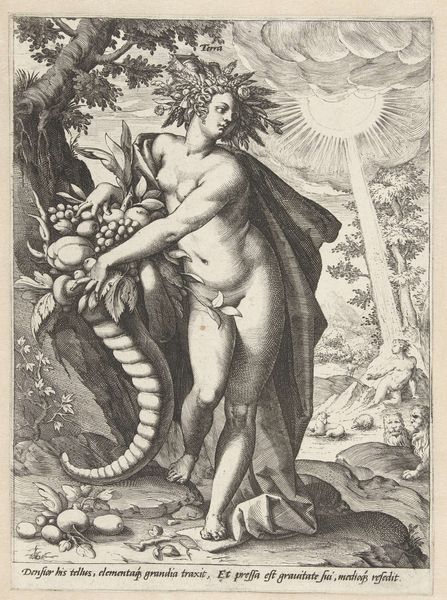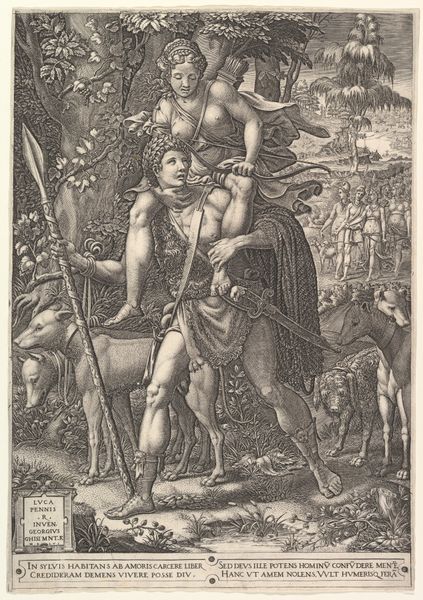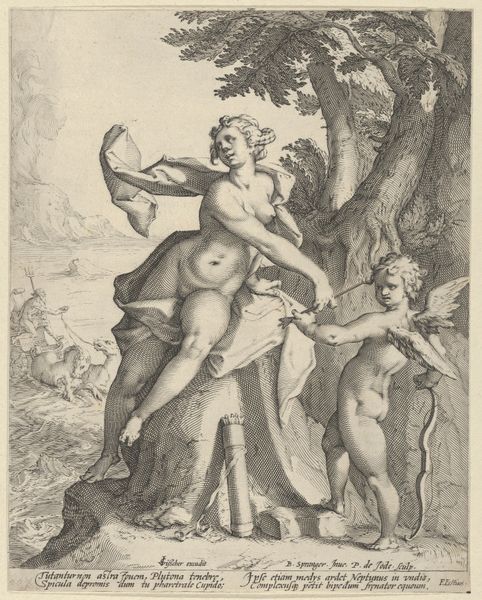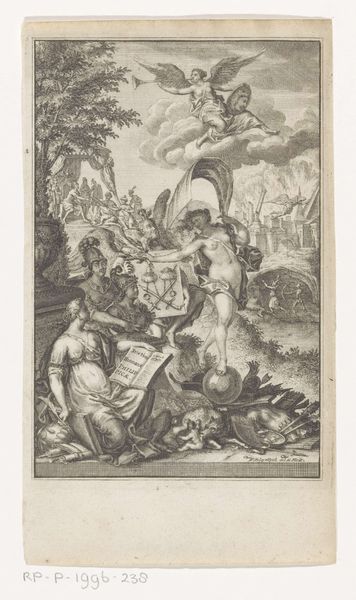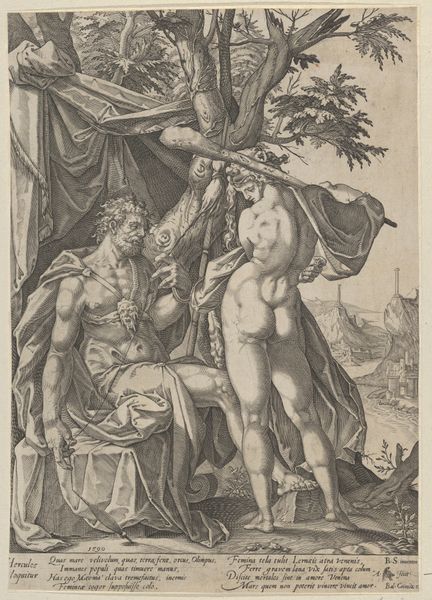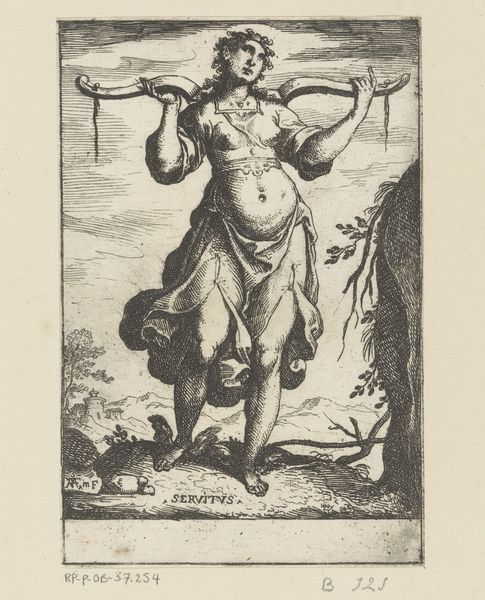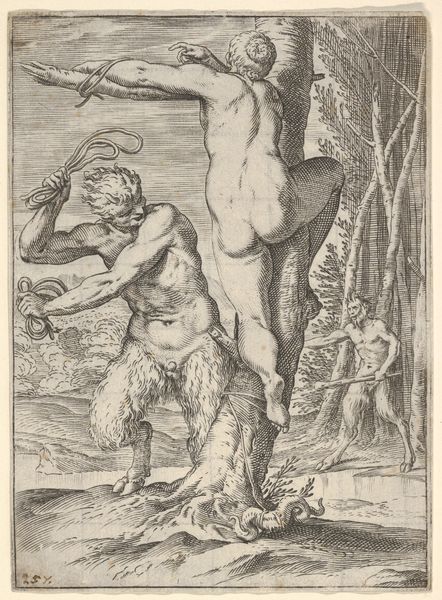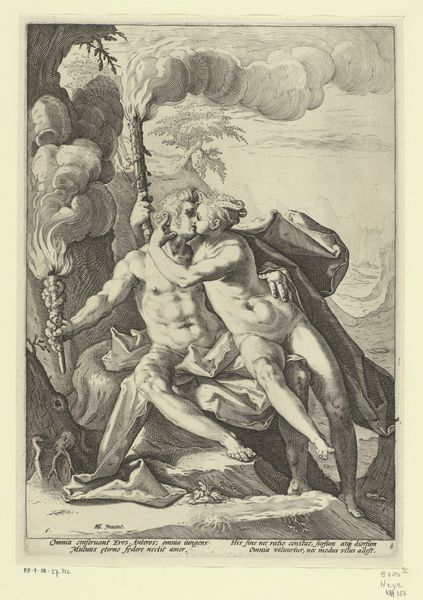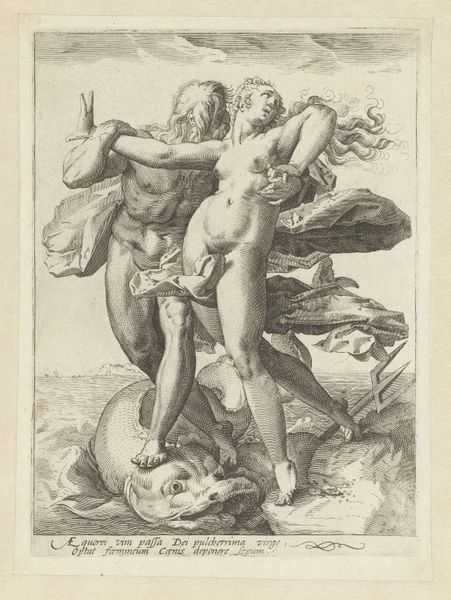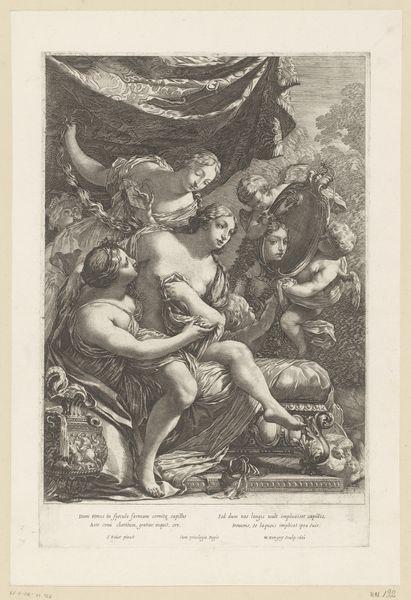
print, engraving
#
allegory
# print
#
old engraving style
#
mannerism
#
figuration
#
pencil drawing
#
engraving
Dimensions: height 344 mm, width 234 mm
Copyright: Rijks Museum: Open Domain
Anton Eisenhoit created this engraving, titled "Heresis Dea," presumably in Germany, around the late 16th century. In it, heresy is allegorically presented as a goddess, but one that is impure and monstrous. The image creates meaning through a series of visual and cultural cues. The figure is semi-nude, with a grotesque combination of animal and human features, standing on and next to mythical beasts. She is loaded with negative attributes, all intended to communicate the dangers of straying from religious orthodoxy. The architectural background and Latin text reflect the institutions of power at this time. In the wake of the Reformation, the religious, social, and political orders of Europe were in turmoil, and this image is an example of the ways that art was used to support the forces of conservatism. Sources in historical theology and the history of political thought would shed more light on this image and the social context in which it was made.
Comments
No comments
Be the first to comment and join the conversation on the ultimate creative platform.
